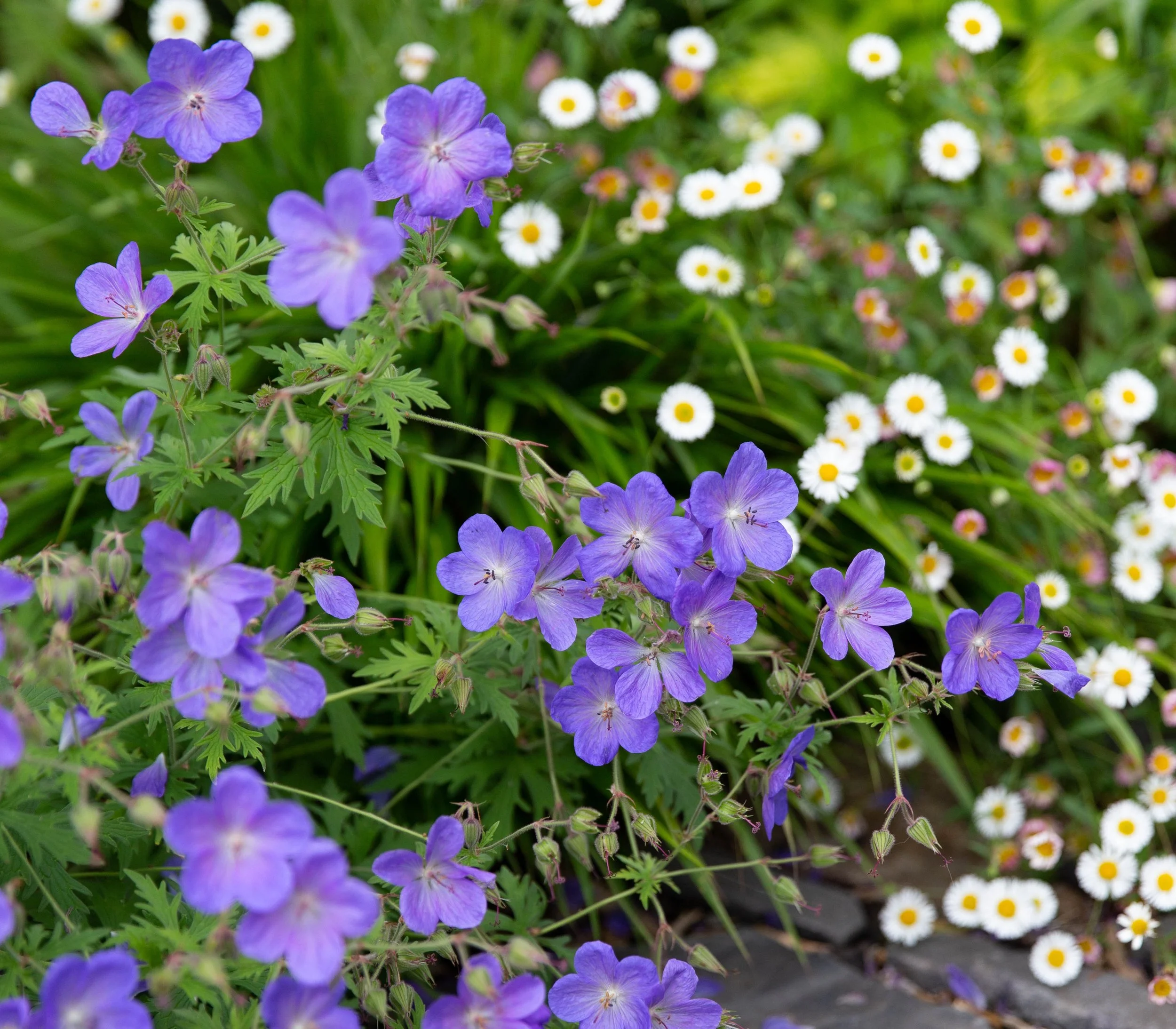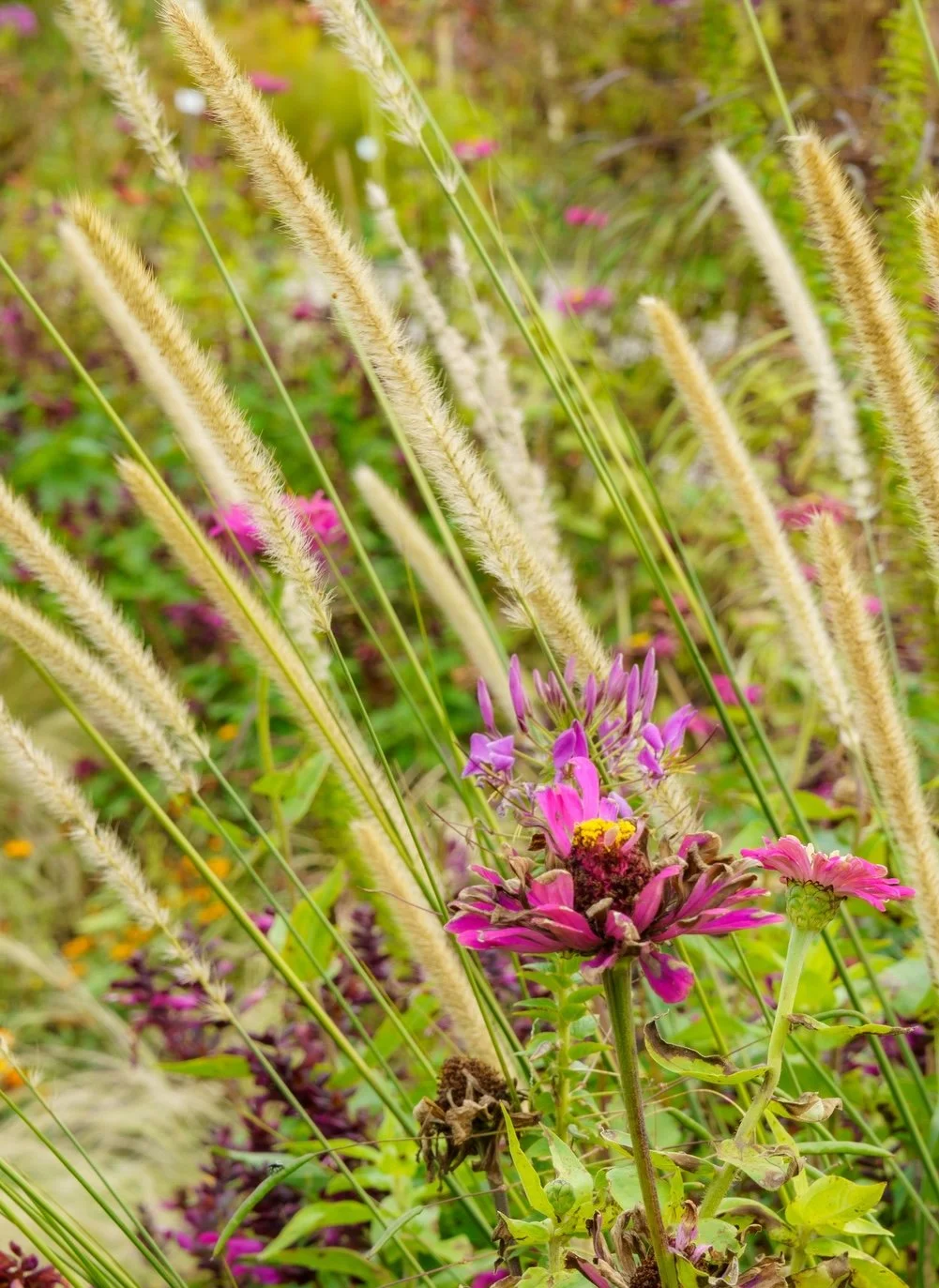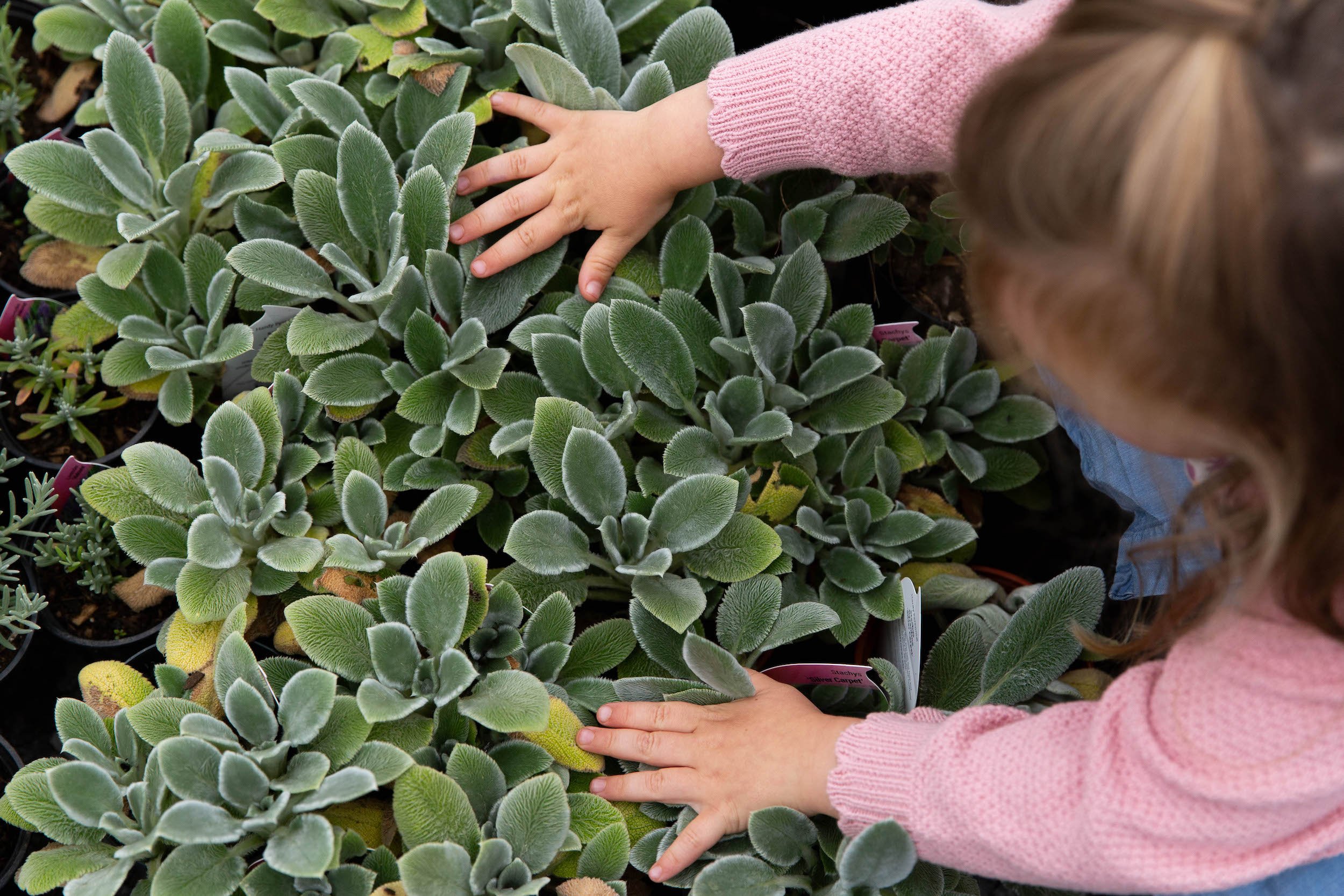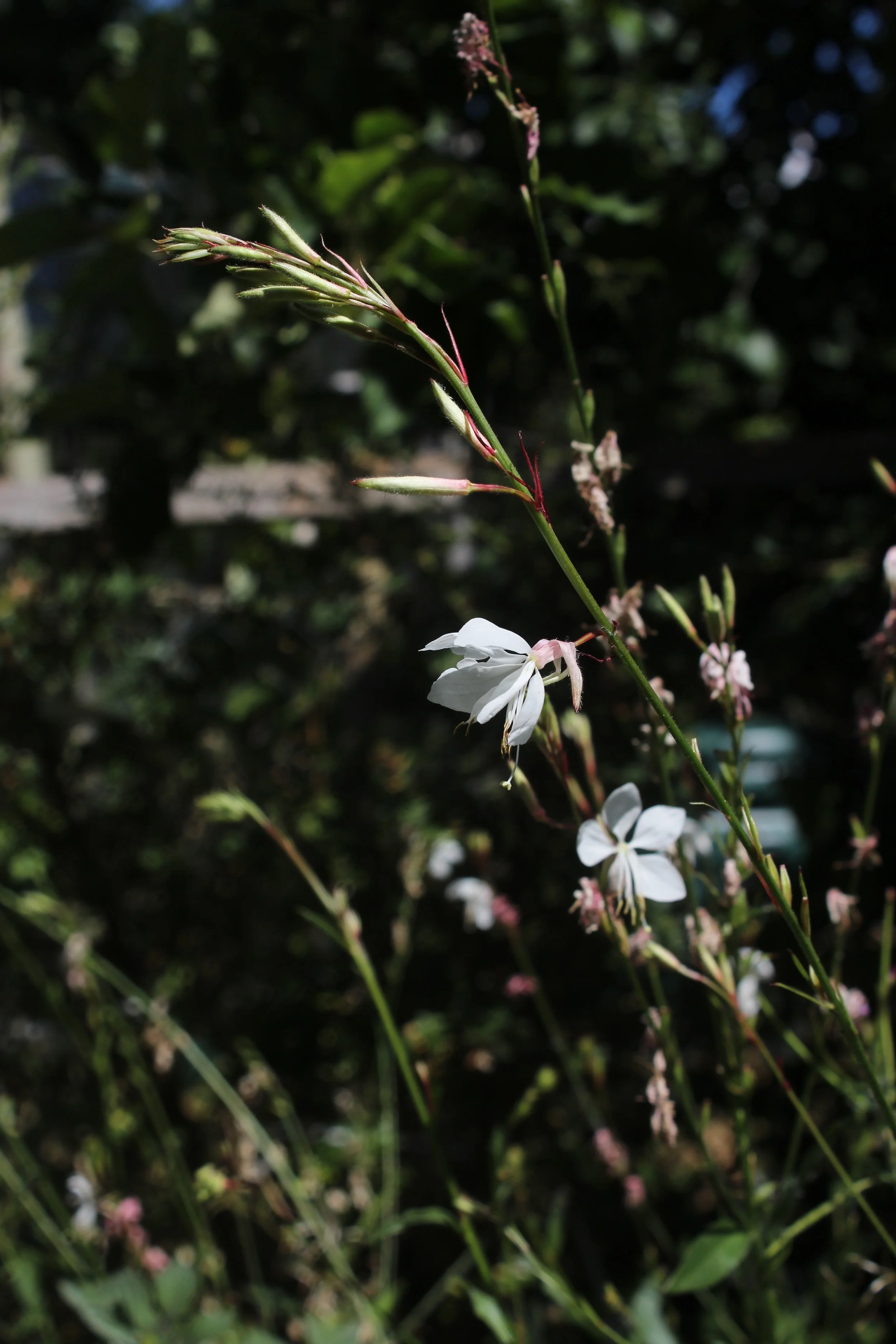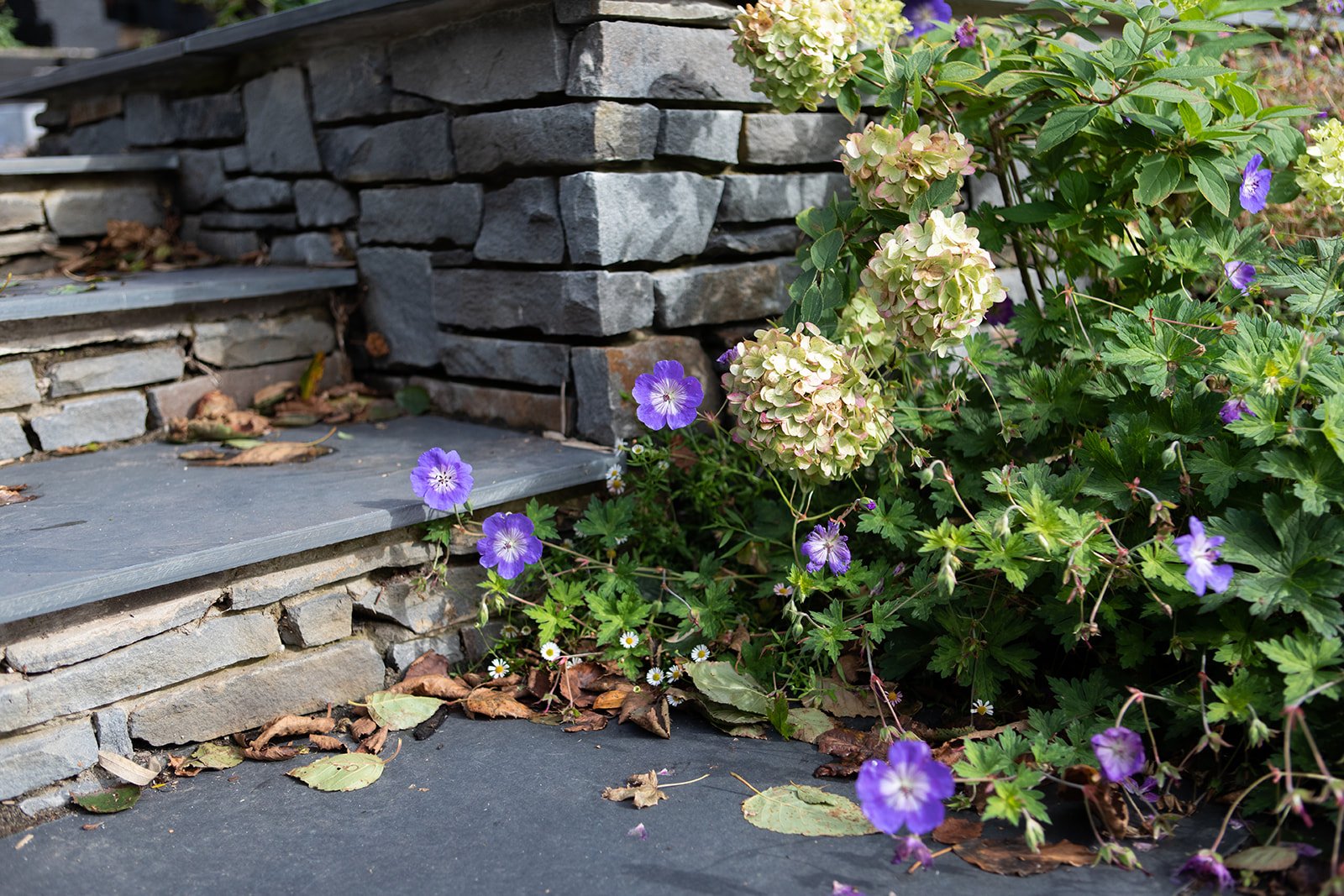Eleven favourite: drought tolerant plants
With the really hot temperatures of Spring and early Summer hitting most of the UK again this year (Spring and Summer 2025 were the hottest on record) the realities of climate change, with increasing temperatures and reduced rain, are affecting our gardens.
Here in Swansea, we still have plenty of drizzly days, but we’ve noticed in our garden and on our plant nursery this year that there has been a huge increase in hot weather, and we’ve been paying attention to which plants can cope with this, and focusing our plans for future years on those that can tolerate hot temperatures and some drought.
Here are 11 of our favourite drought-resistant plants, that we’ve noticed have done well in the recent dry spells:
Erigeron karvinskianus
Such a useful and cheerful plant, that we use in so many gardens and so many different situations. It’s especially handy as underplanting in pots (as in the photo on the right) where it can tolerate really dry conditions without giving up the ghost. It can also grow in really small spaces, such as the edge of steps, or growing in brick walls, all without ever needing to be watered.
It’s a prolific self-seeder in spots where it’s happy, but is easy to weed out if it’s popping up anywhere it’s not wanted.
Check out our Erigeron karvinskianus guide for more info.
2. Geraniums
Geraniums are a great low-maintenance plant for many reasons, and their ability to thrive without needing too much water is just one reason to include them in your garden!
Many will flower for months on end, including Geranium ‘Rozanne’ (pictured left) and cope well with periods of drought.
They’re useful as groundcover and underplanting for shrubs, but also do well in pots (remember to water pots in extended dry spells, as even the toughest of plants won’t be able to pull water up through their roots if a pot has completely dried out.)
For some of our favourite varieties , take a look at our geranium plant guide.
3. Euphorbia myrsinites
Plenty of euphorbias do well in dry conditions, and can survive with little or no watering, but this is one of our favourites, the spiky-leaved Euphorbia myrsinites. It’s a great choice for a gravel garden, or other low-water areas, and it forms an elegant low-growing hummock, with its leaves spiralling outwards in appealing geometric patterns.
It will also grow happily in a pot, though may need some watering in extended dry spells.
Read more about growing euphorbia in our euphorbia plant guide.
4. Eryngium
Eryngiums, known often as sea hollies, are striking plants with bright blue stems and flowers, that do well in exposed locations such as the seaside (as their name suggests!) They need full sun to thrive, but grow well in poor soil and low water levels, so are handy for the edges of paths and the base of walls, as well as in a more traditional mixed border.
There are many different varieties available, and all are popular with pollinators, making them an excellent choice for sunny gardens.
We have discovered on our nursery that some eryngium species — though undeniably beautiful — have flowers with a distinctly unpleasant strong smell in the bright sun! Varieties we’ve found that don’t have this unfortunate smell are Eryngium x olivierianum ‘Big Blue,’ Erygnium Bourgatii, and Eryngium alpinum ‘Blue Star’. (And if you happen to have Eryngium planum or Eryngium alpinum, then we’d recommend planting them in a spot far enough away from human traffic that they can be seen only and not smelt!)
5. Grasses
Many ornamental grasses are drought tolerant. We’ve been experimenting with a few different ones on our nursery and a couple that have done really well in recent heatwaves are Molinia caerulea subsp. arundinacea 'Transparent' and Pennisteum macrourum (African feather grass). Both are graceful, arching grasses, that look good at the front or middle of borders.
Stipa tenuissima doesn’t grow so well for us here in Wales, but is a staple drought-tolerant grass in drier areas of the country. Another one that grows well in gravel gardens and will self-seed when happy, so tends to need a bit of regular maintenance to keep it in check.
Stipa ichu is our preferred choice for our location here, a similar grass that is more robust and stays upright in damp conditions, as well as coping just as well with drought.
Pennisetum macrourum growing in a mixed border
6. Stachys byzantina
Many silver-leaved plants are well-adapted for hot temperatures and little water, including the gloriously soft Stachys byzantina, also known as lamb’s ears.
The “fluff’ that covers the leaves of Stachys byzantina are small hair-like structures called trichomes, which help to prevent the plant being eaten, and also reduce evaporation, by creating a small area of humidity around the leaf - and therefore meaning the plant copes especially well in dry conditions. It’s a popular plant in a gravel garden or a sensory garden.
We’ve also noticed that the closely related Betonica officinalis ‘Hummelo’ (previously known as Stachys officinalis ‘Hummelo’) has been amazing throughout recent heatwaves, needing little watering and not wilting too badly. It has a similar leaf shape, but bright green without hairs, and tall spikes of purple flowers.
7. Hylotelephium (sedum)
Now known botanically as Hylotelephium, but still regularly referred to as sedums, these are a group of plants that thrive with little care and no watering once happily established. They’re popular with pollinators, especially bees and butterflies, and their emerging buds in the Spring time are one of our favourite new leaves to look out for in the garden.
Sedums have thick, fleshy leaves, in colours from green to grey or purple, and late Summer flowers, usually in pinks or purples. If grown in high fertility soils, they can tend to flop from the middle once they’ve been in the ground for more than three years or so, but can be easily lifted and divided in the Autumn (see our guide to dividing for more info) to keep them in check. But sedums grown in drought situations and lower fertility soils tends to produce smaller, lower-growing plants that don’t flop outwards so much. We found Sedum ‘Iceberg’ coped especially well with the hot summer in 2025.
Overall, a really easygoing plant.
8. Linaria purpurea ‘Canon’s Went’
Also known as toadflax, linaria is a sturdy, vigorous plant, that does well without much care or watering. There are plenty of different varieties, but we’re especially fond of ‘Canon’s Went’ with its delicate light-pink coloured flower. Linaria need full sun to grow well, and appreciate sandy, free-draining soil (as you might expect from a plant that tolerates drought well). They look great in coastal gardens and gravel gardens, as well as in more traditional mixed borders.
All toadflax can be vigorous-growing, so may self-seed or spread easily. Pruning and weeding out any seedlings will keep it in check.
9. Oenothera lindheimeri
Previously called Gaura lindheimeri, this late Summer-flowering plant is a real staple for front gardens and low maintenance mixed borders. Tall growing and with airy stems, its covered in white or pink star-shaped flowers in late Summer.
They grow best in sunny and warm spots, and look especially good alongside grasses. They’ll also grow happily in pots, but would need watering during the Summer months, unlike those growing in the ground.
10. Nepeta (catmint)
A very easy-to-grow and low maintenance plant, nepeta, or cat mint, is similar to lavender, with green aromatic leaves — well loved by cats — and blue flowers in the Summer time. Varieties with silver leaves tend to cope with drought even better than the green-leaved varieties, though all will withstand dry conditions happily.
Catmint needs a sunny spot, and needs next to no care once it’s well-established. Perfect for the front of a border, or lining a path.
10. Eurybia divaricata
Another staple plant of ours, that we use in lots of our planting designs as it’s so reliable and good at coping with a range of conditions, including drought periods and dry shade. Previously known as Aster divaricatus — and still frequently referred to as the wood aster — this plant thrives in woodland-like environments, where tree canopies would keep it partially shaded, and tree roots would compete for water.
It flowers in a profusion in late Summer, from August all the way through to October, with the white star-shaped flowers providing late nectar for pollinators. It’s a herbaceous perennial, so will die back below ground in the winter months, with new shoots appearing above the soil in Spring the next year.
An all round excellent plant: robust, low-maintenance, can cope with adverse conditions and great for pollinators too!

